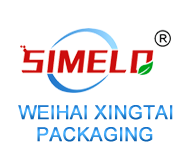[Abstract] when it comes to the performance test of sterilization packaging system for medical devices, it is necessary to define the packaging system first. In my opinion, this packaging system is the combination of all external factors that constitute the protection of the target subject & mdash; medical devices. A packaging system is mainly completed by the steps of packaging material selection, packaging structure (or form) design, packaging process execution and packaging experiment inspection.
First, we need to define the packaging system. The author believes that this packaging system is the combination of all external factors that constitute the protection of the target subject & mdash; medical devices. A packaging system is mainly completed through the steps of packaging material selection, packaging structure (or form) design, packaging process implementation and packaging experiment inspection.
For the sterilization and packaging system of medical devices, based on the particularity of its requirements for packaging performance (mainly requiring the system to resist bacteria and be able to withstand the various sterilization methods to be used designed in advance), the system can be divided into two parts, namely, the sterile barrier system (SBS) belonging to the scope of internal packaging system and the protective packaging system (P PS). Compared with reorganization, SBS is more critical, because its failure means the absolute failure of the whole packaging system; if PPS fails to achieve the expected design purpose, it does not necessarily mean the failure of the whole or the whole batch of packaging system, and it is very simple and low cost to find and find the failure method of this kind of packaging. In fact, in this view, the sterilization packaging system of medical devices and other packaging systems (such as special food packaging and drug packaging) that are sensitive to barrier can be divided into internal packaging system and external packaging system, which is different from the packaging of ordinary industrial products, and also different from the packaging of household appliances and electronic products that pay great attention to buffer packaging.
Functional requirements and experimental methods of inner packaging system
The internal packaging system of sterilization packaging of medical devices, namely the sterile barrier system (SBS), must meet three requirements in terms of functionality, namely, packaging integrity, packaging protection and cleaning peel. The following is a discussion of these three functional requirements and corresponding experimental methods.
1. Requirements for completeness
For the sterilization packaging of medical devices, it is necessary to form a sealing system to ensure the barrier of all kinds of harmful microorganisms. This kind of barrier may be very common in the field of soft packaging composed of paper and plastic, but for the packaging of medical devices that need sterilization, Chinese printing enterprises are strong. When considering the expected sterilization methods, they often face contradictory choices. Because of the low cost and general adaptability to materials in the current sterilization methods in China, EO gas sterilization is widely used The most popular method, however, presents a challenge to the integrity of packaging: it requires that packaging must be ventilated in cartons and cartons, because ethylene oxide also needs to enter through the sealed packaging system to kill the microorganisms inside the packaging system.
Therefore, in order to meet the needs of ethylene oxide sterilization, the materials of the inner packaging system must meet the functions of air permeability and bacteria resistance. Therefore, the materials with enough small pores and certain mechanical strength must be selected, that is, the so-called porous materials. Of course, the pores of variable data printing are slightly smaller than the diameter of harmful microorganisms, so as to effectively prevent the entry of microorganisms. At present, the commonly used porous materials mainly include Tyvek, a non-woven fabric grade material from DuPont company, and medical grade packaging paper which has strict requirements on sanitation, cleanliness and pore size. There are many companies that can provide this kind of medical packaging paper. It is worth noting that these porous materials themselves do not have good direct processing performance to form a complete internal packaging barrier system. They need to go through surface processing means such as coating, so as to obtain the performance of packaging barrier system processed together with other materials.
On the other hand, porous and breathable materials are only a part of the inner packaging system, and the other part can be combined printing of various kinds of polymer films and blister boxes with different structures depending on the packaging form. They are usually processed into a complete inner packaging system through various types of heat sealing, so as to realize the function of blocking microorganisms from entering the inner packaging.
According to the existing standards and specifications, generally refer to ASTM f1929-1998, i.e. & ldquo; penetration test method of toluidine blue dye solution & rdquo;. Prior to this, special printing, rhodamine solution dye penetration test based on EN868-1 was also popular in China (it is estimated that it is still widely used in China), but it was banned due to FDA's suspicion that it is a potential carcinogen. The formula of toluidine blue dye solution is given in ASTM f1929, but the specific experimental operation method is not given in this standard. It must be pointed out that this experimental operation method is still a very skilled book review, which needs simple training to master, but the overall difficulty of the experiment is not great.
For the inner packaging aseptic system designed to meet the high-energy sterilization methods such as gamma; ray and electron beam, there is no need to use porous packaging materials because it has no air permeability requirements, but the integrity requirements of the inner packaging system are the same color management, which can make

